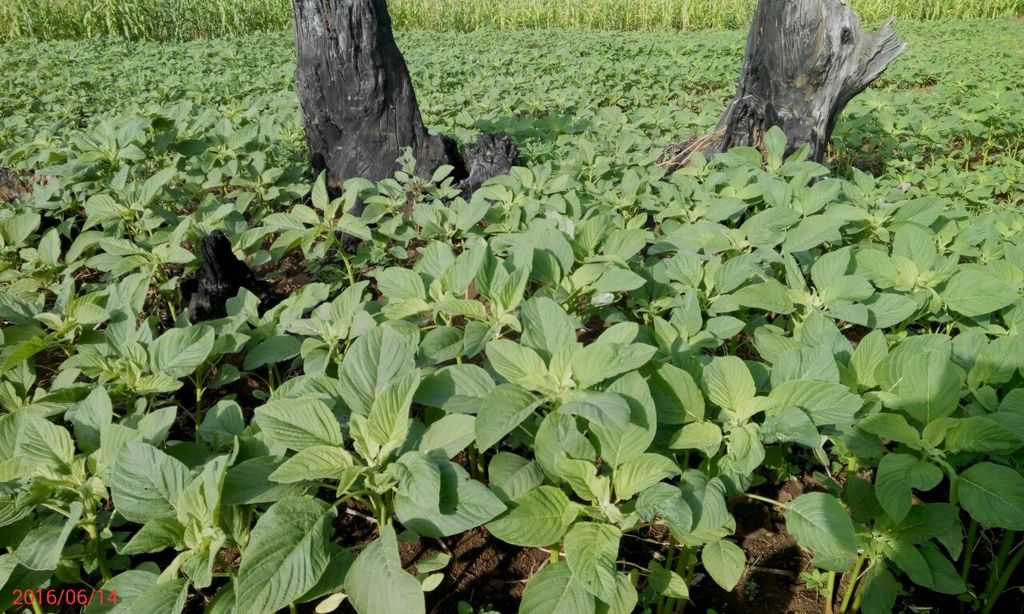Amaranth can easily be mistaken for just another pesky weed. And while those who don't see it as a weed may plant amaranth as a vegetable, Ann Muthoni, a nutrition expert, is seeing it through to its full potential, by making a unique flour out of it.
After arriving in Kenya in 1997 from Sweden, where she first heard about the flour, Muthoni looked for Dr Davidson Mwangi, who had already ventured into amaranth farming. For four years, she accompanied Dr Mwangi in teaching and sensitizing farmers on amaranth farming. She later took to farming herself, making her first harvest in 2003.

Philip Odhiambo's amaranth farm in Homa Bay County. He hopes to harvest seeds for sale in July 2016. PHOTO: COURTESY.
Using the sales and marketing skills she had learnt while assisting Dr Mwangi, Muthoni started outsourcing amaranth grains from farmers across the country and selling them to local processing companies. And in 2008, she had enough exposure and experience to start her processing plant, in Ruai, under the brand name Annico Enterprise.
She now sells the highly lucrative and nutritious flour at various supermarkets across the country, including Tuskys, Clean Shelf and Kamidi.
Speaking to Farmbiz Africa, Ann revealed that her company produces one tonne of amaranth flour products every day, which includes toasted amaranth porridge flour, whole-grain puffed amaranth, baby weaning formula and fortified maize flour, packaged in 250g, 500g and 2kg. She sells a 2kg bag of fortified maize flour at a whole sale price of Sh140 to supermarkets which later retail it for Sh147.
While being a high-value crop, Ann's success demonstrates that amaranth was worth the investment. A 2010 FAO report on promoting the growth and development of small holder farmers and food security, stated that high value crops are regarded as a key to economic empowerment of small holder farmers. The report observes that most small holder farmers - especially in the developing world - are reluctant to change, which ultimately can damage their farm production.
The FAO report cites a case study of small holder farmers in South Africa who have stuck to maize farming for many years, receiving low yields due to depleted soils. The report also offered those farmers an alternative, through planting legumes such as peas and soya beans, which are high value crops and ideal for nitrogen fixation.
Although she has contracted farmers across the country to deliver her the produce, Ann lamented that the lack of a steady supply of amaranth leaves is slowing her down. She, however, describes the business as rewarding, after getting contracted to stock 52 Tuskys supermarket branches across the country.
Not only does it prove its worth in sales, but amaranth seeds are highly nutritious. Amaranth flour is low in cholesterol and sodium, and is also a good source of iron, magnesium and phosphorus, as well as manganese and folic acid, both essential nutrients for mothers and children.
Muthoni’s success shows that good earnings can be made from high value crops, most of which are ignored by many farmers. Grain amaranth, after planting, grows with little maintenance. It can be harvested thrice in a year and a kilogram retails for KSh50.
















Comments powered by CComment